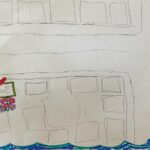Today we had a class with Rich McCue about coding. I realized very quickly that I did not really understand all that coding could entail. At first I felt inspired, and then the moment we had access to try some of the coding websites… I felt lost. I went to the most simple coding activity, and for the life of me could not figure out how to do it. In a lot of ways this is good – it shows me how it feels to be a beginner as well. I will be better at teaching something if I also go through the learning process. After seeing the screen share from one of my classmates, I started to realize how I was to go about it. The coding activity I was trying was the one with characters from Frozen. As well, I thought the brief example of using robomagic.org to discuss and come to understand equity and equality was a really need way to start a conversation that is very important to have. However, I could not figure out how to use this program.
Rich explained that engaging kids with coding can help them understand what happens in the background of the digital world. Further, it can help develop computational thinking skills and problem solving. The level of planning that is required for coding assignments and activities is thorough. Understandably, he also claimed it is easy to tie in with the interests of students. He elaborated on this idea well by expressing that often the best thing to do is to start by “scratching your own itch,” and creating and working with something that is already interesting to you. He also used a video of kids trying to write instructions for their father on how to make a peanut butter and jelly sandwich to demonstrate how important it is to be clear about instructions, since computers do EXACTLY what you tell them to. This video was so funny, and really drove the point home, but also shows how daunting coding is! Rich described it as an ‘iterative process.’ He also shared his experiences of using similar methods of problem solving, and said he “dig into the cobwebs of his learning” to remember how to figure out angles and tree height when they wanted to build a home for their goats. Math problems in non-mathematical settings can put a light into a child’s eyes, and we retain information much better.
Rich also made a point of saying that we ought not have kids in front of screens at all hours of the day, and that moving around and being in nature are also very important. His story of building a home for his goats is a good example of how to use coding principles in an outdoor and active context. I likely will use more of an “unplugged” method for teaching these skills, but undoubtedly this lecture helped me to wrap my mind around these ideas. I’m also still trying to comprehend that a 3D printer exists…
Photo by Tudor Baciu on Unsplash





